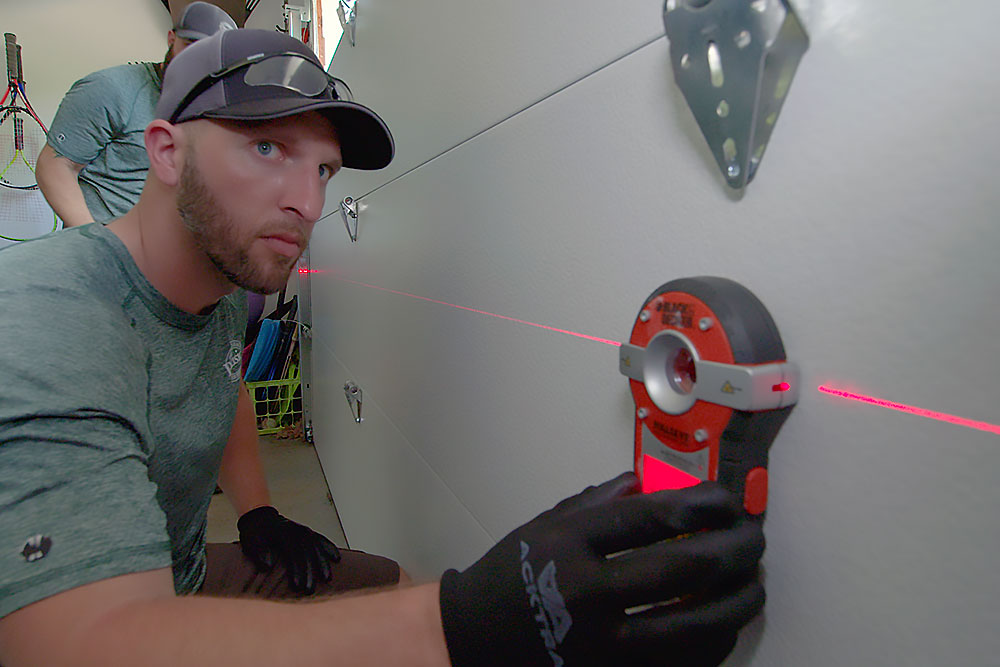
If you have a garage attached to your home, you may not realize how much heat or cold can escape through your garage door. A poorly insulated garage door can affect the temperature and comfort of your entire house, as well as increase your energy bills and noise levels. That’s why insulating your garage door can be a smart and worthwhile investment.
In this article, we will explore the benefits of insulating your garage door, from energy savings to noise reduction, and how you can choose the best insulation option for your needs.
What is Garage Door Insulation?
Garage door insulation is the process of adding a layer of material to the inside of your garage door to reduce heat and cold transfer. This material can be either batts or rigid foam boards, which are specially designed to fit into the channels or panels of your garage door. Garage door insulation kits are available in the market, which include pre-cut insulation panels, adhesive, tape, and retainer pins to hold the insulation in place. Alternatively, you can also cut and install the insulation yourself, using materials from your local hardware store.
Garage door insulation is measured by its R-value, which indicates its thermal resistance or ability to prevent heat and cold transfer. The higher the R-value, the better the insulation. However, the R-value of garage door insulation also depends on other factors, such as the thickness of the material, the type and quality of the garage door, and the weather conditions in your area.
The Benefits of Insulating Your Garage Door
Insulating your garage door can provide you with several benefits, such as:
- Energy savings: An insulated garage door can help you save money on your heating and cooling costs by keeping your garage warmer in winter and cooler in summer. According to Bob Vila, an insulated garage door can keep your garage an average of 10 to 12 degrees warmer in winter and as much as 20 degrees cooler in summer1. This can also reduce the strain on your HVAC system and extend its lifespan.
- Noise reduction: An insulated garage door can also help reduce the noise from outside, such as traffic, neighbors, or animals. This can make your garage a more peaceful and quiet place to work or relax. Moreover, an insulated garage door can also dampen the sound of your garage door opening and closing, as well as any noise you make inside your garage. This can be beneficial for you and your neighbors, especially if you use your garage for hobbies or activities that generate a lot of noise, such as playing music or using power tools.
- Climate control: An insulated garage door can also help you maintain a more comfortable and consistent temperature in your garage throughout the year. This can make your garage more suitable for storing items that are sensitive to extreme temperatures, such as paint, electronics, or food. It can also make your garage more enjoyable for spending time in, whether you use it as a workshop, a gym, a playroom, or a living space.
- Protection: An insulated garage door can also protect your garage and its contents from moisture, mold, pests, and fire. Moisture can seep into your garage through cracks or gaps in your garage door, causing damage to your walls, floor, or items. Mold can grow in damp and dark places, posing health risks to you and your family. Pests can enter your garage through small openings and nest in your insulation or belongings. Fire can spread quickly through flammable materials or electrical wires in your garage. An insulated garage door can help prevent these problems by creating a tighter seal around your garage door and reducing the risk of condensation or infiltration. t
- Aesthetics: An insulated garage door can also improve the appearance and value of your home. An insulated garage door can look more sleek and modern than a plain metal one. It can also match the style and color of your house better than a standard one. An insulated garage door can also increase the curb appeal and resale value of your home by making it more energy-efficient and attractive.
How to Choose the Best Insulation Option for Your Garage Door
If you decide to insulate your garage door, you need to consider several factors before choosing the best insulation option for your needs. These factors include:
- The type of your garage door: The type of your garage door determines how easy or difficult it is to insulate it. Some types of garage doors are more suitable for insulation than others. For example, steel or aluminum doors with channels or panels are easier to insulate than wooden or fiberglass doors without them.
- The size of your garage door: The size of your garage door affects how much insulation material you need and how much it will cost. The larger your garage door is, the more insulation material you will need and the more expensive it will be.
- The climate in your area: The climate in your area affects how much insulation you need and what kind of insulation you should use. The colder or hotter your area is, the more insulation you need and the higher R-value you should look for. You should also consider the humidity and precipitation levels in your area, as they can affect the performance and durability of your insulation material.
- The purpose of your garage: The purpose of your garage affects how much insulation you need and what kind of insulation you should use. If you use your garage for storage or occasional use, you may not need as much insulation as if you use your garage for living or working. You should also consider the noise level and fire safety of your garage, as they can affect the type and quality of insulation you should use.
Based on these factors, you can choose between two main types of insulation for your garage door: batts or rigid foam boards. Batts are flexible rolls or sheets of fiberglass or mineral wool that can be cut and fitted into the channels or panels of your garage door. Rigid foam boards are stiff panels of polystyrene or polyurethane that can be cut and attached to the inside of your garage door.Both types of insulation have their pros and cons, such as:
- Batts are cheaper, lighter, and easier to install than rigid foam boards. They also have higher R-values per inch than rigid foam boards. However, batts are more prone to sagging, compressing, or getting wet than rigid foam boards. They also require retainer pins to hold them in place, which can create holes in your garage door.
- Rigid foam boards are more durable, stable, and moisture-resistant than batts. They also create a smoother and cleaner look than batts. However, rigid foam boards are more expensive, heavier, and harder to install than batts. They also have lower R-values per inch than batts. They require adhesive and tape to attach them to your garage door, which can damage the paint or finish of your garage door.
Conclusion
Insulating your garage door can be a beneficial project that can help you save energy, reduce noise, control climate, protect your garage, and improve your home’s appearance and value. However, insulating your garage door also requires careful planning and consideration of various factors, such as the type, size, and purpose of your garage door, the climate in your area, and the type and amount of insulation material you need. By choosing the best insulation option for your needs, you can enjoy the benefits of insulating your garage door for years to come.
If you need professional help with insulating your garage door or installing a new one, you can contact a trusted and experienced company that offers high-quality garage door parts and services in Mission Viejo and surrounding areas. Whether you need a new garage door, a repair, or an upgrade, Garage Doors Mission Viejo can provide you with the best solution for your needs and budget.










